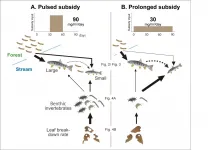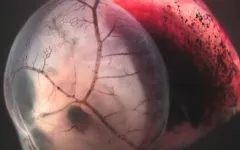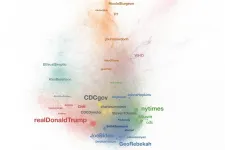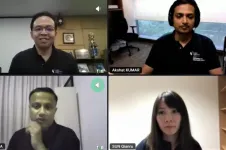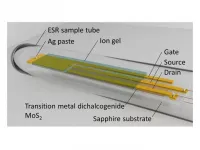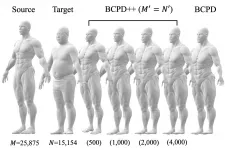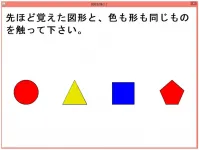(Press-News.org) In the brain, billions of neurons reach to each other, exchanging information, storing memories, reacting to danger and more. Scientists have barely scratched the surface of the most complex organ, but a new device to automatically collect tissue for analysis may allow for a quicker, deeper dive into the brain.
Their approach was published in IEEE/CAA Journal of Automatica Sinica, a joint publication of the IEEE and the Chinese Association of Automation.
"The ultimate goal of this study is to further promote the speed and quality of 3D-reconstruction of brain neural connections," said the author Long Cheng, professor with the State Key Laboratory of Management and Control for Complex Systems, Institute of Automation, Chinese Academy of Sciences.
Currently, researchers make thin serial slices of biopsied brain tissue or of animal tissue samples -- smaller than the width of a human hair -- using a cutting tool called a microtome. The tissue floats in water, from which researchers collect the sections and place them on a silicon wafer to be imaged with an electron microscope. Once the images are taken, they are digitally reconstructed into a 3D model.
"The manual collection of brain sections requires operators to possess a very high professional literacy, and it also consumes considerable time and energy," Cheng said. "A natural way of overcoming this limitation is to employ an automation technique using a robot to improve the collection effectiveness."
The researchers developed a circular silicon wafer that rotates as part of the microtome. As brain sections are cut, the rotation motion moves the water so that the sections adhere automatically to the wafer. The device, called the automated silicon-substrate ultra-microtome (ASUM), is controlled by an automated system that detects the brain sections on the surface of the water to improve collection efficiency, increasing the number of sections each wafer can hold.
"The proposed ASUM can reduce the collection skill requirement of the operator, and the interventions the operator must perform are less demanding than using existing assisting devices," Cheng said. "It also ensures the quality of electron microscopic imaging of brain sections without cumbersome post-processing operations."
However, Cheng said, it is not a completely automated system, as the device cannot automatically replace the silicon wafer. Next, the researchers plan to introduce an automatic silicon wafer replacement device that incorporates an advanced control system.
"Understanding the structure of neural connections in the brain is helpful to explore the working mechanism of the human brain, so as to promote the diagnosis and treatment of brain diseases and the development of brain-like intelligence systems," Cheng said. "Our ultimate goal is to test whether the quality and efficiency of the reconstruction of the brain's neural network can be improved by the designed automatic collection device."
INFORMATION:
L. Cheng, W. Z. Liu, C. Zhou, Y. X. Zou and Z.-G. Hou, "Automated Silicon-Substrate Ultra-Microtome for Automating the Collection of Brain Sections in Array Tomography," IEEE/CAA J. Autom. Sinica, vol. 8, no. 2, pp. 389-401, Feb. 2021.
Fulltext of the paper is available:
http://www.ieee-jas.net/en/article/doi/10.1109/JAS.2021.1003829
IEEE/CAA Journal of Automatica Sinica aims to publish high-quality, high-interest, far-reaching research achievements globally, and provide an international forum for the presentation of original ideas and recent results related to all aspects of automation.
The first Impact Factor of IEEE/CAA Journal of Automatica Sinica is 5.129, ranking among Top 17% (11/63, SCI Q1) in the category of Automation & Control Systems, according to the latest Journal Citation Reports released by Clarivate Analytics in 2020. In addition, its latest CiteScore is 8.3, and has entered Q1 in all three categories it belongs to (Information System, Control and Systems Engineering, Artificial Intelligence) since 2018.
Why publish with us: Fast and high quality peer review; Simple and effective online submission system; Widest possible global dissemination of your research; Indexed in SCIE, EI, IEEE, Scopus, Inspec.
JAS papers can be found at http://ieeexplore.ieee.org/xpl/mostRecentIssue.jsp?punumber=6570654 or http://www.ieee-jas.net
Insects that fall from the surrounding forest provide seasonal food for fish in streams. Researchers at Kobe University and The University of Tokyo have shown that the lengthening of this period has a profound effect on food webs and ecosystem functions present in streams.
These research results provide proof that changes in forest seasonality also affect the ecosystems of nearby rivers. This finding highlights the importance of predicting the effects of climate change on ecosystems.
The research group consisted of Associate Professor SATO Takuya and post-graduate student UEDA Rui of Kobe University's Graduate ...
In a new study by the Yale Department of Immunobiology and Yale Cancer Center, researchers report combined liver and growth factor humanization enhances human red blood cell production and survival in circulation the immunodeficient murine host. The discovery could help in the development of treatments of life-threatening blood disorders, such as myelodysplastic syndrome, and diseases afflicting red blood cells, including sickle cell disease and malaria. The study is published online today in the journal Science.
"Red blood cell diseases, such as thalassemia and sickle cell disease involve approximately 5% of ...
Professor Byoungwoo Kang develops a high-density cathode material through controlling local structures of the Li-rich layered materials.
Researchers in Korea have developed a high-capacity cathode material that can be stably charged and discharged for hundreds of cycles without using the expensive cobalt (Co) metal. The day is fast approaching when electric vehicles can drive long distances with Li- ion batteries.
Professor Byoungwoo Kang and Dr. Junghwa Lee of POSTECH's Department of Materials Science and Engineering have successfully developed a high energy-density cathode material that can stably maintain charge and discharge for over 500 cycles without the expensive ...
Most people have heard of stem cells, cells from which all other cells with specialized functions are generated. Hematopoietic stem cells (HSCs) are the architects of blood cell development and are responsible for blood cell formation throughout the life of an organism. HSCs are also used in the treatment of cancer and immune disturbances.
Previous research into HSC transplantation has involved the use of adult and fetal mice. This has involved the removal of recipient HSCs using approaches including irradiation and the administration of DNA damaging drugs. In a first of its kind, researchers from the University of Tsukuba devised a novel approach for HSC deletion in mouse embryos. This report provides the first description of embryonic HSC depletion and transplantation of donor HSCs ...
SMU Office of Research and Tech Transfer - One of the motivations for the recently published Journal of Accounting Research paper "Politically Connected Governments" was the daily experience with the subway system in New York City.
The author of the paper, SMU Assistant Professor of Accounting Kim Jungbae, told the Office of Research & Tech Transferthe research question for the paper which examines the consequences of powerful political connections for local governments, was inspired by the New York Times article "The Most Expensive Mile of Subway Track on Earth" (January 24, 2018).
"The article suggests that the NYC subway system is ...
Since the start of the Covid-19 pandemic, charts and graphs have helped communicate information about infection rates, deaths, and vaccinations. In some cases, such visualizations can encourage behaviors that reduce virus transmission, like wearing a mask. Indeed, the pandemic has been hailed as the breakthrough moment for data visualization.
But new findings suggest a more complex picture. A study from MIT shows how coronavirus skeptics have marshalled data visualizations online to argue against public health orthodoxy about the benefits of mask mandates. Such "counter-visualizations" are often quite sophisticated, using datasets from official sources and state-of-the-art visualization ...
SMU Office of Research & Tech Transfer - Even before countries began rolling out their vaccination campaigns, Pfizer, Moderna and AstraZeneca's announcements had already proved fortifying shots. Stocks rallied and healthcare workers celebrated in the wake of the vaccine news late last year. But months on, that early euphoria has somewhat evaporated, replaced by uncertainty and debate over vaccine safety, possible side effects and varying degrees of citizen reluctance.
Artificial intelligence (AI) researchers and health experts modelling COVID-19's spread ...
Tsukuba, Japan and Warsaw, Poland - Scientists from the University of Tsukuba and a scientist from the Institute of High Pressure Physics detected and mapped the electronic spins moving in a working transistor made of molybdenum disulfide. This research may lead to much faster computers that take advantage of the natural magnetism of electrons, as opposed to just their charge.
Spintronics is a new area of condensed matter physics that attempts to use the intrinsic magnetic moment of electrons, called "spins," to perform calculations. This would be a major advance ...
Kanazawa, Japan - Non-rigid point set registration is the process of finding a spatial transformation that aligns two shapes represented as a set of data points. It has extensive applications in areas such as autonomous driving, medical imaging, and robotic manipulation. Now, a method has been developed to speed up this procedure.
In a study published in IEEE Transactions on Pattern Analysis and Machine Intelligence, a researcher from Kanazawa University has demonstrated a technique that reduces the computing time for non-rigid point set registration relative to other approaches.
Previous ...
Kanazawa, Japan - As the global population ages, the rate of dementia is increasing worldwide. Given that early detection is critical for treatment, effective ways to screen for dementia are a high research priority. Now, researchers from Japan have developed a new screening tool that can be administered in a matter of minutes.
In a study published in PLOS ONE, researchers from Kanazawa University have revealed a new computerized cognitive test, termed the computerized assessment battery for cognition (C-ABC), which they found to be effective in screening for both dementia and mild cognitive impairment (MCI) in just 5 minutes.
Computerized cognitive tests are frequently chosen over paper-and-pencil ...
